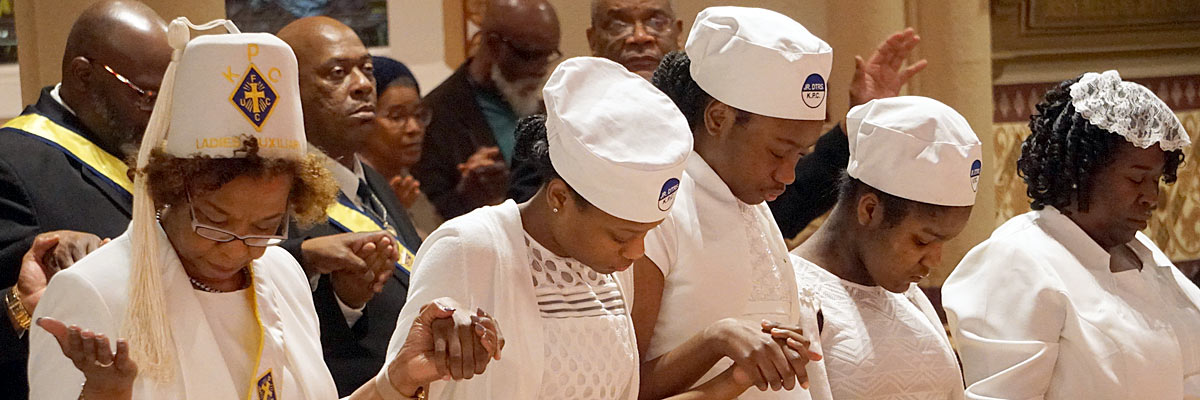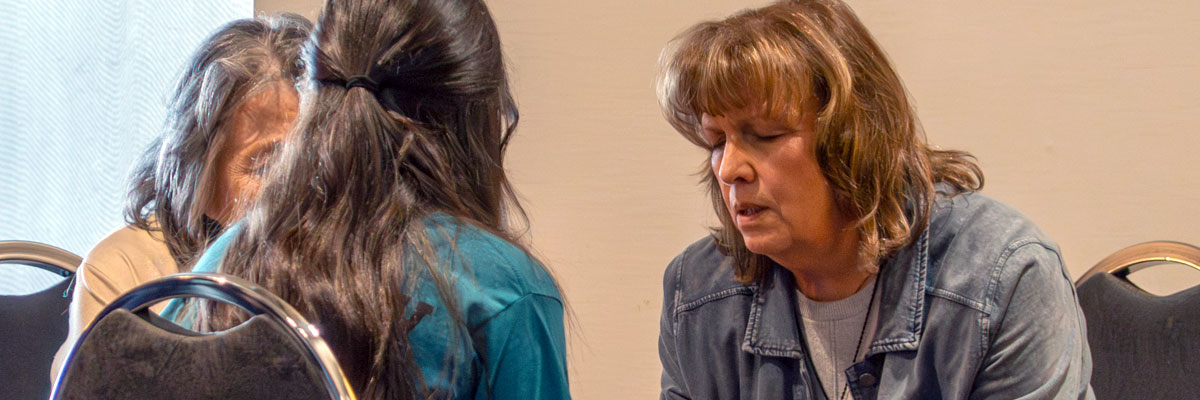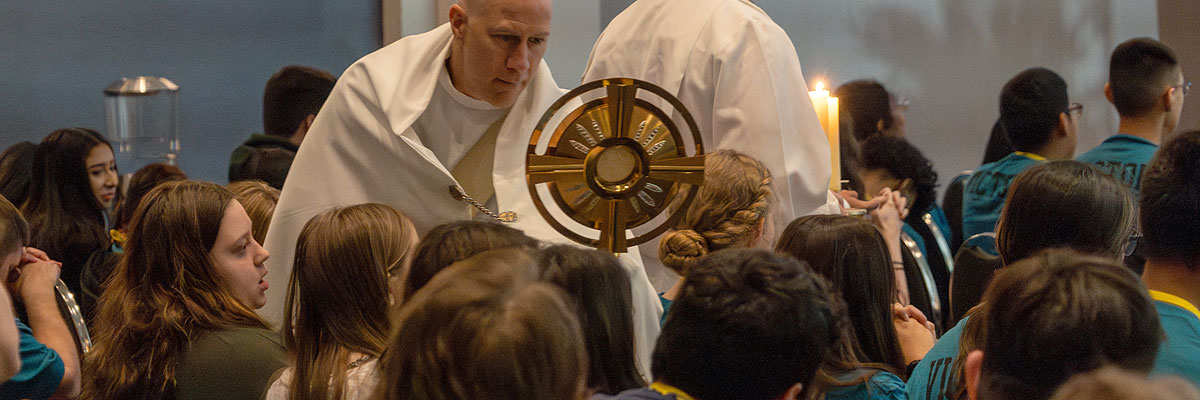Official Website of the
Catholic Diocese of Little Rock
Though many forms of prayer exist, most important is to just do it
Published: April 5, 2008
By Judy Hoelzeman
We Catholics pray in every way imaginable. Our prayer lives are as diverse as we are. Our different personalities, abilities and limits make our prayer intensely personal. We pray in so many ways, too, because we are influenced by two millennia of rich spirituality and holiness.
Most Catholics learned the same prayers and devotions as children and many of us still pray them today. For the past 40 years, with the encouragement of the Second Vatican Council, we pray more with the Scriptures, in groups (Catholic and ecumenical), silently and aloud, with rote prayers and spontaneous prayers.
We have so many things in our favor as “pray-ers.” The Catechism of the Catholic Church reminds us of the “great cloud of witnesses” from the Book of Hebrews. In this cloud are all the people of faith who have gone before us. They are well known saints as well as our ancestors and friends, who teach us by their lives what it means to pray. They constantly surround us and pray for us to God.
We have the Scriptures as a wellspring leading us into prayer, and some of the best Scripture scholars in the world to guide us. Lay people and priests in this very diocese developed one of the earliest Catholic Bible studies for lay people, which teach both private and group prayer. It is recognized for its excellence everywhere and it is right at our fingertips.
In Mary, the first person to accept Jesus into her life, we have the perfect example of walking this road of Christian life. We pray to Mary as part of the cloud of witnesses, and particularly as one who continues to be as close to her Son in heaven as she was on earth. We pray the rosary, litanies and devotions to Mary and to the saints confidently. We have the highly structured Liturgy of the Hours, which Vatican II encouraged all of us to pray. We make retreats; we join in prayer vigils against abortion, war, capital punishment and other evils.
At the high point of our Catholic prayer, we have the Eucharist. All our individual prayer finds its larger meaning and its completion in the Eucharist, called by Vatican II the “source and summit” of our Christian lives. So, we pray as community. Even our personal prayer has a communal dimension because we (and the cloud of witnesses before us) are called in baptism primarily to a life of community.
We have everything we need to pray and we use it. We express our emotions in prayer; joy when things are good; anger when things aren’t; terror when threatened by illness and tragedy; guilt when we’ve missed the mark. All our emotions come from our hearts and are understood by Jesus who experienced them, too. Sometimes we pray with the right motives; sometimes, selfishly.
But the more we pray the more peaceful and honest we are at prayer. The closer our relationship with Jesus becomes through prayer, the better we understand our obligation to community. The better that understanding, the stronger the Church. Some encouraging advice on prayer comes to us from the “cloud of witnesses.” Dom John Chapman, a Benedictine monk and abbot who died in 1933, is often quoted as saying, “Pray as you can and do not try to pray as you cannot.” So, however you pray, keep on praying.
Judy Hoelzeman is a member of St. Edward Church in Little Rock.






